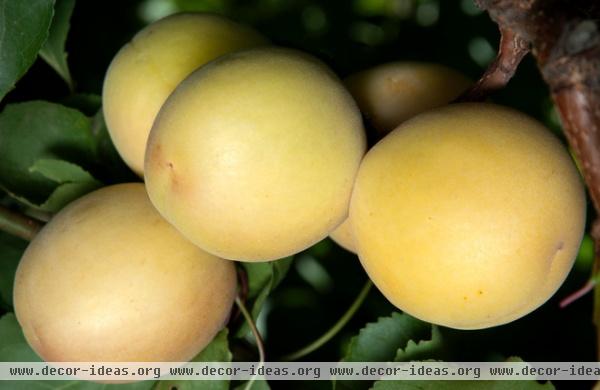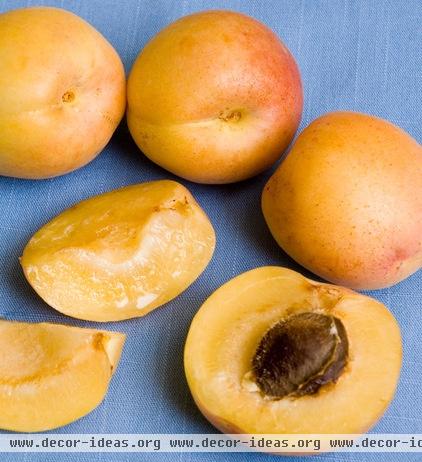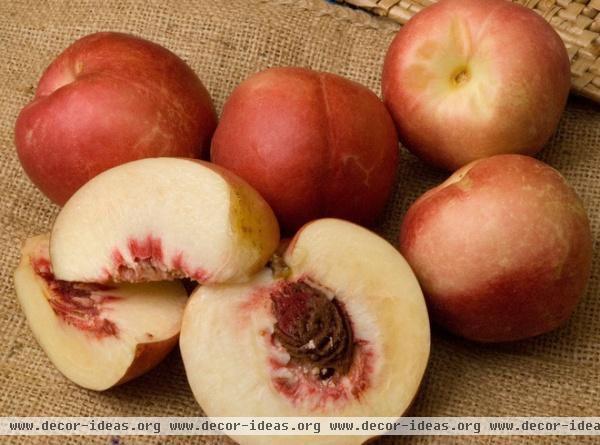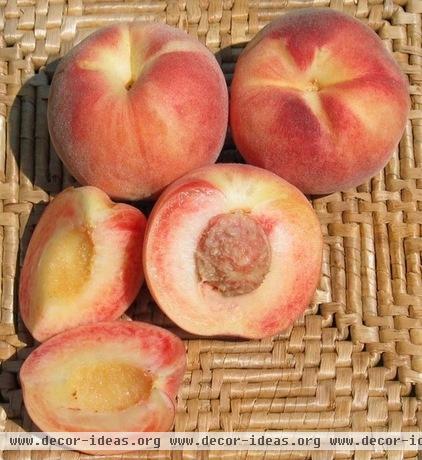Grow Plum Hybrids for Your Favorite Fruit Flavors
There’s been a proliferation of plum hybrids, crosses between plums and other stone fruits, over the past few decades. Plumcots led the way, but apriums and pluots rapidly gained acceptance. These days you can find peach-plum, nectarine-plum and cherry-plum hybrids as well. These hybrids are meant to combine the best aspects of their respective parents, so you can decide what characteristics you want, then match them to the right hybrid.
Both plumcots and pluots are sweet and juicy, and about the size of a plum. Plumcots are generally an even mix of plum and apricot. They tend to resemble plums, but you’ll find the fruit a bit sweeter, and often the trees don’t need a pollenizer. Pluots, on the other hand, are more plum than apricot. The trees do well in the same location as many Japanese plums do. Unlike plumcots, you’re likely to need a pollenizer. (Note: Pluot was originally a trademarked name; these days you’ll find the term in wider use. When buying a pluot tree, it’s best to see if it’s one developed by the original breeder, Floyd Zieiger.)
Apriums taste like an apricot with just a touch of plum added to the mix. They owe their smaller size, yellow coloring and early ripening to the apricot parent. Plant a plum or an apricot nearby as a pollenizer. Apriums make amazing jam.
The newer hybrids are just hitting the market, but if you can imagine a mix of peach, nectarine or cherry with plum, then you’ll have an idea of what they taste like. No popular combo names have been coined so far for these, but it’s only a matter of time.

Where they will grow: Hybrid plums grow well in the same areas where their dominant parent grows well. This can range from USDA zone 3 to zone 10, but generally zones 4 or 5 through 9 are the best. You may be able to grow outside the preferred growing areas, but climate issues such as heat and cold may affect your crop.
Favorite plumcots: Flavorella, Plum Parfait
Favorite pluots: Dapple Dandy, Flavor Grenade, Flavor King, Flavor Queen, Flavor Supreme, Flavorosa, Splas
Favorite apriums: Cot-N-Candy, Flavor Delight
Other favorites: Delight, Spice Zee (nectarine-plum), Sprite (cherry-plum), Tri-Lite (peach-plum)

Planting guidelines: Plant bare-root trees in late winter or early spring; plant containers from fall through spring as long as the ground can be worked. Choose a sunny, warm spot with well-drained soil. Prune lightly to create an open vase shape with strong lateral branches rather than a central trunk.
Care requirements: Plum hybrids don’t need copious amounts of water, but they do best with a regular schedule and at least moderate water. Mulching around the trees (keep it 3 inches away from the trunk) will help retain moisture, prevent weeds and keep the fruit from bruising badly when it falls.
Feed in early spring, before the tree starts to leaf out, with a complete, balanced fertilizer.
Thin once the fruit forms so excess fruit won’t break limbs and also to ensure a consistent crop from year to year. Otherwise your hybrid may tend to have a heavy crop one year only to be followed by a very light one.

Pruning: Prune trees when they are dormant. Remove dead, diseased or damaged branches. Cut out any crossing branches to maintain the vase shape. Then follow pruning instructions for whichever tree is more prominent in the hybrid’s background — plums for plumcots and pluots, apricots for apriums and so on.
For harvesting ease, try to keep the trees 10 to 12 feet tall. Some are naturally that short; others may want to grow taller. Summer pruning can keep tree height in check if necessary.
Pests and diseases: As with plums, brown rot and gummosis are the main problems you might encounter. For brown rot, dispose of the fruit, then spray with lime sulfur before the tree blooms the next spring. For gummosis it’s best to identify the underlying cause, which could be anything from borers to cankers, before treating.
Peach and nectarine hybrids may develop peach leaf curl, which can be treated with a dormant-season spray.
Birds and squirrels are the most likely pests. The usual approaches of netting, shiny objects hung nearby and fake predators (be sure to move them around) can help, but you probably will lose some of your crop, no matter how vigilant you are.

Harvest: Pick the fruit when it’s fully colored and slightly soft. All are best when fully ripened on the tree, so you may need to do some taste tests.
More: How to grow more fruit trees












